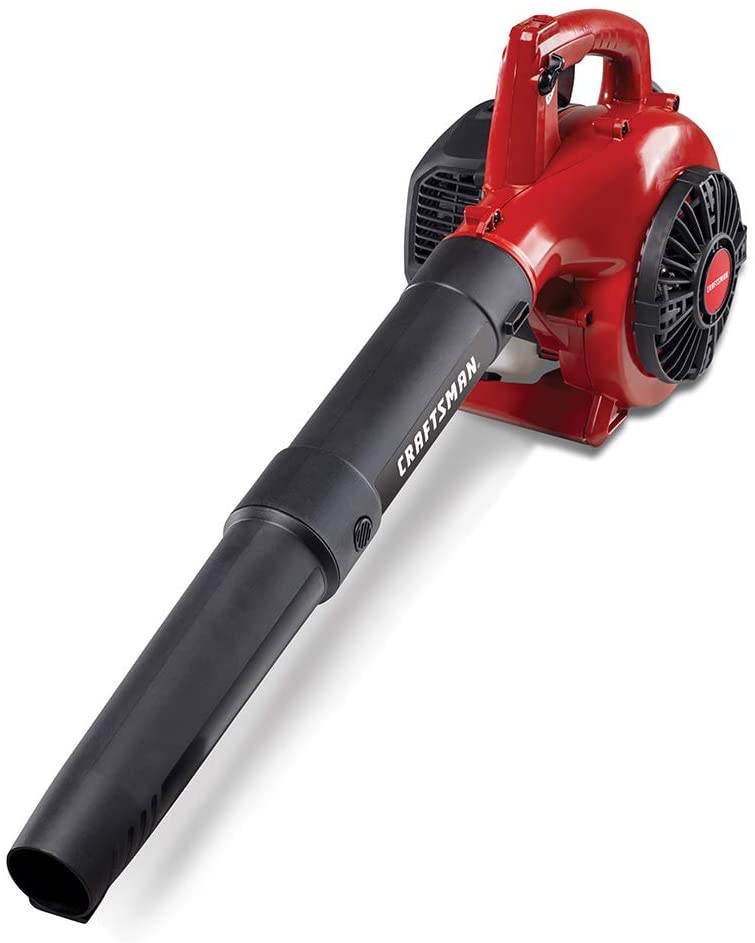

Noise pollution is also a concern with leaf blowers, as they can emit noise levels above those required to cause hearing loss to both the operator and those nearby. Dust clouds caused by leaf blowers contain potentially harmful substances such as pesticides, mold, and animal fecal matter that may cause irritation, allergies, and disease. In addition to the adverse health effects of carbon monoxide, nitrogen oxides, hydrocarbons, and particulates generated in the exhaust gas of the gasoline-powered engines, leaf blowers pose problems related to the dust raised by the powerful flow of air. A 2011 study found that the amount of NMHC pollutants emitted by a leaf blower operated for 30 minutes is comparable to the amount emitted by a Ford F-150 pickup truck driving from Texas to Alaska. These pollutants have been linked to cancer, heart disease, and asthma. The two-stroke engines used in most leaf blowers operate by mixing gasoline with oil, and a third of this mixture is not burned, but is emitted as an aerosol exhaust. In the United States, US emission standards prescribe maximum emissions from small engines. Noise level of a gas-powered leaf blower using the NIOSH Sound Level Meter appĮmissions from gasoline-powered grounds-keeping equipment in general are a source of air pollution and more immediately, noise pollution.

Cordless leaf blowers today operate with zero emissions and operate at an estimated 70% noise reduction (compared to levels produced by their predecessors). The new NiCad battery-powered leaf blower designs were further improved by way of the more powerful, and longer run time lithium-ion batteries, which incorporate most cordless leaf blowers marketed today. In the mid-2000s and to further answer critics, manufacturers once again evolved the leaf blower, with the use of NICad (nickel-cadmium) powered tool design to create the first cordless leaf blower. suburban neighborhoods, many communities had by now, in fact, banned their use. While leaf blowers were becoming more tolerable in U.S. However, 1999 regulations were far more stringent, forcing the engineering of a quieter, more compliant 2-stroke engine design. To meet the 1995 California regulations for noise and air pollution, leaf blower manufacturers modified the current engine designs to comply. It is estimated that the sale of leaf blowers in the U.S., had exceeded 1 million units by 1989. The company changed its name to Echo in 1978.Īmong such rival manufacturers as Stihl, Weed Eater, and Husqvarna, Echo saw the sales of leaf blowers in the 1970s explode. in 1968, Kyoritsu applied for a patent on a backpack blower mister design, and in 1972 established themselves in the United States as Kioritz Corporation of America, and is said to have invented the first leaf blower in 1977. Kyoritsu followed that design with a backpack/blower/misting machine in 1955. The leaf blower originated in 1947 as a backpack fogger apparatus, invented by Japanese-based Kyoritsu Noki Company.
#LEAF BLOWER PORTABLE#
Being both portable and able to generate wind speeds of between 140–270 miles per hour (63–121 m/s) and air volumes of 14 m 3 per minute, the leaf blower has many potential uses in amateur construction projects. Other functions beyond the simple use of garden maintenance have been demonstrated by Richard Hammond on the Brainiac television series, in which a man-sized hovercraft was constructed from a leaf blower. By 1990, annual sales were over 800,000 in the U.S., and the tool had become a ubiquitous gardening implement. Leaf blowers were originally introduced in California. ( July 2020) ( Learn how and when to remove this template message) Unsourced material may be challenged and removed. Please help improve this section by adding citations to reliable sources.


 0 kommentar(er)
0 kommentar(er)
